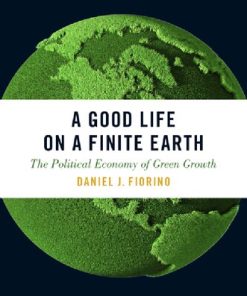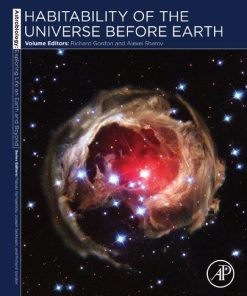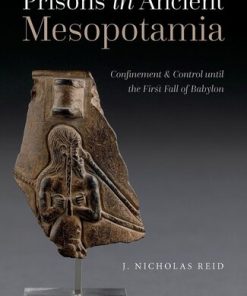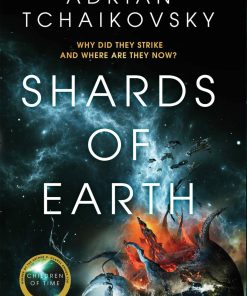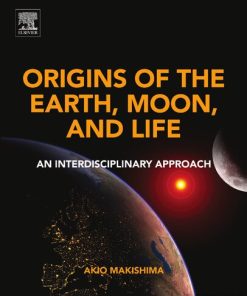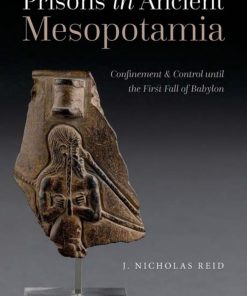(Ebook PDF) Ancient Supercontinents and the Paleogeography of Earth 1st edition by Lauri Pesonen 0128185341 9780128185346 full chapters
$50.00 Original price was: $50.00.$25.00Current price is: $25.00.
Ancient Supercontinents and the Paleogeography of Earth 1st edition by Lauri J Pesonen – Ebook PDF Instant Download/DeliveryISBN: 0128185341, 9780128185346
Full download Ancient Supercontinents and the Paleogeography of Earth 1st edition after payment.
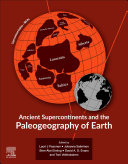
Product details:
ISBN-10 : 0128185341
ISBN-13 : 9780128185346
Author : Lauri J Pesonen
Ancient Supercontinents and the Paleogeography of Earth offers a systematic examination of Precambrian cratons and supercontinents. Through detailed maps of drift histories and paleogeography of each continent, this book examines topics related to Earth’s tectonic evolution prior to Pangea, including plate kinematics, orogenic development, and paleoenvironments. Additionally, this book discusses the methodologies used, principally paleomagnetism and tectonostratigraphy, and addresses geophysical topics of mantle dynamics and geodynamo evolution over billions of years. Structured clearly with consistent coverage for Precambrian cratons, this book combines state-of-the-art paleomagnetic and geochronologic data to reconstruct the paleogeography of the Earth in the context of major climatic events such as global glaciations. It is an ideal, up-to-date reference for geoscientists and geographers looking for answers to questions surrounding the tectonic evolution of Earth.
Ancient Supercontinents and the Paleogeography of Earth 1st Table of contents:
Chapter 1. Precambrian supercontinents and supercycles—an overview
Abstract
1.1 The history of the supercontinent research—the five milestones
1.2 The Earth and the solar system
1.3 Some tectonic concepts
1.4 Precambrian supercontinents and their cyclicity—observational evidence
1.5 How to reconstruct Precambrian terranes?
1.6 Models of the Precambrian supercontinents—some remarks
1.7 Precambrian paleomagnetism and paleogeography: a guideline
1.8 Precambrian paleomagnetism applied to paleoreconstructions—an example
1.9 Precambrian paleomagnetic databases
1.10 Global and terrane geological maps for reconstructions
1.11 Precambrian supercontinent cycle
1.12 Conclusions and suggestions for future work
1.13 How we proceed in this book
Acknowledgments
Appendices
References
Chapter 2. A mantle dynamics perspective on the drift of cratons and supercontinent formation in Earth’s history
Abstract
2.1 Introduction
2.2 Methodology
2.3 Results
2.4 Long-term cooling of the mantle (case D)
2.5 Discussion
2.6 Conclusion
Acknowledgments
References
Chapter 3. Precambrian geomagnetic field—an overview
Abstract
3.1 Introduction
3.2 Precambrian geomagnetic field—characteristic features
3.3 Inclination frequency analysis
3.4 Field reversals
3.5 Paleosecular variation
3.6 Paleointensity
3.7 Continental drift
3.8 Results
3.9 Conclusion
Acknowledgments
References
Chapter 4. The Precambrian paleogeography of Laurentia
Abstract
4.1 Introduction and broad tectonic history
4.2 Paleomagnetic pole compilation
4.3 Differential motion before Laurentia amalgamation
4.4 Paleogeography of an assembled Laurentia
4.5 Comparing paleogeographic models to the paleomagnetic compilation
4.6 Paleoenvironmental constraints on paleolatitude
4.7 Evaluating Laurentia’s Proterozoic paleogeographic neighbors
4.8 The record implies plate tectonics throughout the Proterozoic
4.9 Conclusion
Acknowledgments
Notes
Glossary
References
Chapter 5. The Precambrian drift history and paleogeography of Baltica
Abstract
5.1 Introduction
5.2 Geological evolution of Baltica
5.3 Material and methods
5.4 Paleomagnetic evidence for the drift of Baltica
5.5 Paleoproterozoic–Neoproterozoic climatic indicators for Baltica
5.6 Drift velocities of Baltica and its subcratons with implication to tectonics
5.7 Implications for Baltica in Superia supercraton and Nuna and Rodinia supercontinents
5.8 Concluding remarks
Acknowledgments
Supplementary table
References
Chapter 6. The Precambrian drift history and paleogeography of Amazonia
Abstract
6.1 Introduction
6.2 The Amazonian Craton
6.3 Quality criteria of paleomagnetic poles
6.4 Amazonian paleomagnetic data and apparent polar wander path
6.5 Final remarks
Acknowledgments
References
Chapter 7. The Precambrian drift history and paleogeography of Río de la Plata craton
Abstract
7.1 Introduction
7.2 Geology of the Río de la Plata craton
7.3 Material
7.4 Results
7.5 Discussion
7.6 Conclusions
Acknowledgements
References
Chapter 8. Precambrian paleogeography of Siberia
Abstract
8.1 Introduction
8.2 Geology of the Siberian Craton
8.3 Paleomagnetic data and paleolatitudes of Siberian Craton
8.4 Possible neighbors of Siberian Craton
8.5 Conclusion
Acknowledgments
References
Chapter 9. Whence Australia: Its Precambrian drift history and paleogeography
Abstract
9.1 Introduction to the Precambrian geology of Australia
9.2 Material
9.3 Results: original and age-binned apparent polar wander paths
9.4 Discussion
9.5 Summary
References
Chapter 10. The Precambrian drift history and paleogeography of India
Abstract
10.1 Introduction
10.2 Data selection
10.3 Orogenic belts of Peninsular India
10.4 Geomagnetic field, paleoclimate and Greater India Assembly
10.5 India in a global context
10.6 Conclusion
Acknowledgments
References
Chapter 11. The Precambrian drift history and paleogeography of the Chinese cratons
Abstract
11.1 Introduction
11.2 Precambrian geology of the north China craton
11.3 Precambrian paleomagnetic database and apparent polar wander path of the north China craton
11.4 Precambrian drift history of the NCC
11.5 Precambrian drift history of the south China craton
11.6 Precambrian drift history of the Tarim craton
11.7 Summary
Acknowledgments
References
Chapter 12. The Precambrian drift history and paleogeography of the Kalahari Craton
Abstract
12.1 Introduction
12.2 Crustal architecture and geology of the Kalahari Craton
12.3 Paleomagnetic data
12.4 Results
12.5 Discussion
12.6 Summary
Acknowledgements
References
Chapter 13. Constraints on the Precambrian paleogeography of West African Craton
Abstract
13.1 Introduction
13.2 Geology of West African Craton
13.3 Review of paleomagnetic data
13.4 LIP records in West African Craton
13.5 Paleoclimate indicators
13.6 Precambrian paleogeography of West African Craton
13.7 Concluding remarks
Acknowledgments
References
Chapter 14. The Precambrian drift history and paleogeography of Congo−São Francisco craton
Abstract
14.1 Introduction
14.2 The Congo−São Francisco craton
14.3 Paleomagnetic poles
14.4 The Congo−São Francisco craton in supercontinents
14.5 Conclusion
Acknowledgments
References
Chapter 15. Neoarchean–Paleoproterozoic supercycles
Abstract
15.1 Introduction
15.2 Previous models of Archean–Paleoproterozoic crustal assemblies
15.3 Methods and material
15.4 Testing of the proposed models with paleomagnetic data
15.5 Concluding remarks
Acknowledgments
References
Chapter 16. Paleo-Mesoproterozoic Nuna supercycle
Abstract
16.1 Introduction
16.2 The previous models of Paleo- to Mesoproterozoic Nuna
16.3 Methods
16.4 Paleo- to Mesoproterozoic geological evolution
16.5 Reconstructing the Nuna supercycle
16.6 Alternative models for Nuna
16.7 The life-cycle of Nuna—comparison of paleomagnetic poles
16.8 Octupole field at 1.9–1.2 Ga affecting paleoreconstructions?
16.9 Drift velocities with the implication of tectonic style
16.10 Paleoclimatic constraints on Nuna core on the reconstructions
16.11 Summary and remarks
Acknowledgements
References
Chapter 17. Meso-Neoproterozoic Rodinia supercycle
Abstract
17.1 Introduction
17.2 Laurentia
17.3 Baltica
17.4 Siberia
17.5 Amazonia
17.6 West Africa
17.7 Kalahari
17.8 São Francisco/Congo and Rio Plata
17.9 Proto-Australia
17.10 India
17.11 “Missing-link” possibilities for Chinese cratons
17.12 Smaller cratonic fragments
17.13 Existing Rodinia models
17.14 Paleomagnetic tests
17.15 2020 hindsight: a synthetic Rodinia model
17.16 Geodynamic implications
17.17 Rodinia development into its fourth decade
Acknowledgments
References
Chapter 18. Phanerozoic paleogeography and Pangea
Abstract
18.1 Introduction
18.2 Main tectonic units
18.3 Apparent polar wander paths
18.4 True polar wander and global APWPs
18.5 The plate reconstructions
18.6 The Paleozoic
18.7 Pangea assembly and geometry
18.8 The Mesozoic
18.9 Pangea dispersal
18.10 The Cenozoic
Acknowledgments
References
Chapter 19. An expanding list of reliable paleomagnetic poles for Precambrian tectonic reconstructions
Abstract
19.1 Introduction
19.2 Methods
19.3 Data and discussion
People also search for Ancient Supercontinents and the Paleogeography of Earth 1st:
what were all the supercontinents
what were the names of the supercontinents
what are the 7 supercontinents
ancient supercontinents
ancient super ocean
Tags:
Ancient Supercontinents,the Paleogeography,Earth,Lauri Pesonen
You may also like…
Politics & Philosophy - Social Sciences
A Good Life on a Finite Earth: The Political Economy of Green Growth
Uncategorized
History - Ancient History
Science Fiction - High Tech & Hard Sci-Fi
Earth Sciences - Earth History
Origins of the Earth, Moon, and Life: An Interdisciplinary Approach
History - Ancient History
Politics & Philosophy - Politics
The Rise and Fall of Peace on Earth 1st edition by Michael Mandelbaum 0190935952 9780190935955



